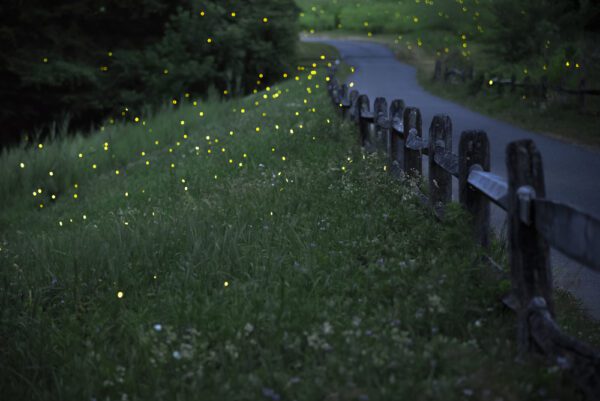
With summer comes memories of dark, summer evenings running around the yard catching fireflies. While you may know them as lightening bugs, there was nothing more delightful than capturing these mercurial little insects and watching them light up inside your jar with holes punched in the lid. Have you ever wondered why these fascinating creatures are so flashy?
Fireflies or lightening bugs are beetles that are part of the Lampyridae family. While there are many species of lightening bugs, they are closely related to Glow-worms or fireflies that glow during the daytime. They produce a chemical within their bodies made of oxygen combined with calcium, adenosine triphosphate, and luciferin to create a bioluminescent light. It is considered the most efficient light in the world with all of the energy emitted as light. Lightening bugs are generally nocturnal with the male fireflies flashing to attract mates. The flashing lights are also a warning to predators as they emit a toxic chemical that toads, birds, and some spiders learn to steer clear of. Most North American male fireflies fly around blinking while the female lightening bugs sit calmly on vegetation just waiting for the right suitor to come along. A short flashing interchange between them and well…, some privacy please! Each lightening bug specie has its own flash pattern so as not to attract the wrong sort. A study from Cornell University found that some females of the Photuris genus will signal male fireflies of a different species and then eat them. It’s a tough world out there for dating!
Lightening bugs overwinter as larvae under bark in wet areas where they prey on earthworms, snails and slugs. They emerge in early summer when the weather turns warm and humid. June and July are generally their most active mating seasons. Their life cycles are short with the females laying eggs in the soil and so the life cycle begins again. Luciferase has been proven to be very useful in food safety and forensic testing. Unfortunately fireflies are on the decline. While synthetic luciferase is available, many labs still harvest fireflies which may have led to their decreasing numbers. Light pollution and elimination of their habitats are thought to be a reason as well. Fireflies don’t migrate to new fields, they just disappear altogether. Some suggestions for luring fireflies to your landscape would be planting native trees, especially pine trees as their dropped needles provide a great habitat for lightening bug habitats, creating a water feature such as a small pond, leaving high grass if possible, keeping a wood pile as they like to lay their larvae in brush, turning off outdoor lights, and as always, avoid using pesticides whenever possible.
My mother always made us let the fireflies go. How right she was to encourage us to let them go back to nature in order to live again through their offspring. By doing so, we were able to enjoy their flashes year after year. What lucky children we were!
PS. There are terrific websites out there such as National Geographic, EarthSky, and Firefly.org should you want more information about this fascinating insect. Happy Reading!
Aug 2020 By: Sue Becker, Bedford Extension Master Gardener Volunteer; BAMGA President
Photo Source: Alabama Cooperative Extension System